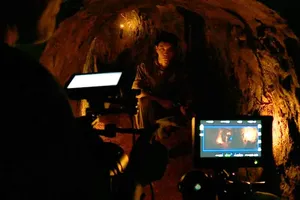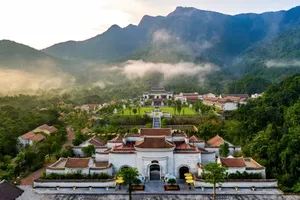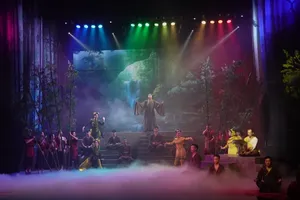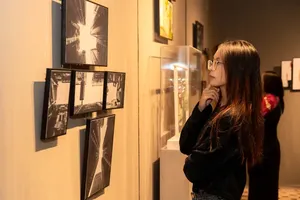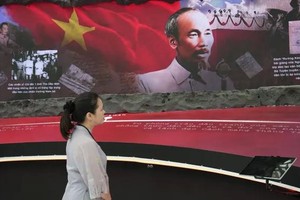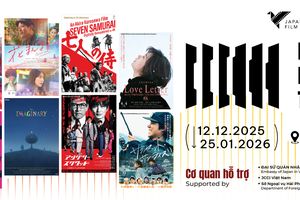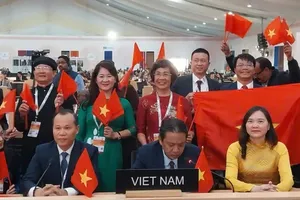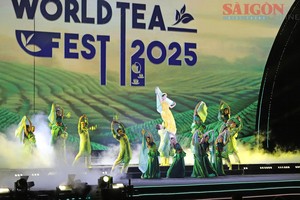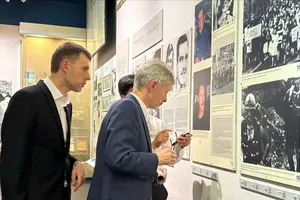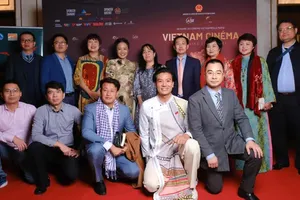
At the talk show on May 7 titled “Contemporary Art on the Foundation of Heritage”, which served as the opening event for the third season of the United Overseas Bank – Painting of the Year competition, Chairman Dang Xuan Hoa of the Painting Art Council under the Vietnam Fine Arts Association firmly asserted that contemporary Vietnamese art simply cannot exist without its traditional underpinnings. He posited that heritage serves as both the origin and an inexhaustible wellspring of material, instilling each work of art with a distinct identity.
The techniques, visual language, and aesthetic sensibilities left by preceding generations are not mere “relics”, he argued, but rather a dynamic “launchpad” for modern creative thought. Regardless of how contemporary a work’s form may be, it fundamentally needs to be anchored in identity.
For the Chairman, a profound empathy with the past – encompassing everyone from Indochinese masters to folk artisans – constitutes the essential ethical and professional bedrock for today’s artists. Creativity, in his view, is not an act divorced from history but a continuation rooted in consciousness and gratitude. “Art truly touches the heart only when it is filled with cultural soul,” he emphasized.
However, Chairman Dang Xuan Hoa cautioned that exploiting tradition solely through replication and formal imitation risks rendering art rigid and sapping its vitality. Heritage, he stressed, is not an immutable “monument” but a living entity that demands to be understood, felt, and reinterpreted through a unique lens. Only through this process can artists genuinely breathe life into their creations, transforming traditional values into the intrinsic power of contemporary art. He expressed confidence that the trajectory of modern art is fully capable of revitalizing heritage, provided it is guided by creative courage and informed understanding.
Echoing this perspective, Director Duong Thu Hang of Hanoi Studio Gallery noted that the recent market interest in Indochinese painting signals a positive trend. It demonstrates that traditional values not only exert a powerful appeal but also help to define the Indochinese fine arts brand. Nevertheless, many artists worry that merely chasing short-term market preferences could lead them down a predictable path, sacrificing depth of thought and creative independence.
In the talk show, Artist Ngo Van Sac further elaborated, asserting that heritage is not merely a treasure for exploitation but “living material”, intrinsically linked to each artist’s memories, culture, and emotions. From customs and handicraft techniques to folk aesthetics, all serve as vital sources of inspiration nourishing creativity. He underscored that heritage is not a static heirloom but demands to be inherited and creatively explored through personal lived experience and individual emotion.
For Ngo Van Sac, heritage is evident in every facet of life, including architecture, crafts, cuisine, and the human connection with nature. However, he maintained that a link to tradition holds value only when it springs from authentic emotion. Without this genuine connection, heritage risks becoming a mere “artistic façade”, masking superficiality in creative thinking. Artists, he argued, must discern between form and spirit, distinguishing between “drawing upon heritage” and “clinging to outdated molds”.
He also stressed that artistic distinctiveness arises from dedicated effort and the artist’s unique individuality. Whether utilizing traditional materials like lacquer, silk, or folk painting, a work’s true value resides not in the medium but in the artist’s soul infused within it. In this way, heritage transcends being merely a narrative of the past; it becomes a vibrant part of the present, rich in evocative power and expressive capability.
He mentioned the challenges of finding a great balance between tradition and modernity, viewing it as a continuous process of experimentation and refinement. “Creativity cannot be taught by anyone, but each artist can learn from their own true emotions to create art with depth”, he affirmed.
Director Duong Thu Hang recalled the famous artist Nguyen Tu Nghiem’s profound statement: “Go to the very end of tradition and you will meet the contemporary”. This serves as a pivotal message on the interplay between the past and present, providing a vital orientation for Vietnamese art as it navigates integration.
Today’s artists, by cherishing heritage, courageously innovating, and drawing from their unique identities, will propel Vietnamese art forward powerfully – not through mere imitation, but with an independent and confident voice.
